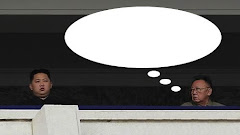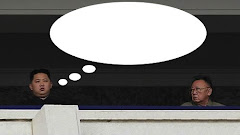Let's start with a little history about Yasukuni. I am not writing out everything, since much of it is quite innocuous. I encourage anyone interested in Yasukuni Jinja to go to their link and read the Q&A section..
Under the reign of His Imperial Majesty the people of Japan sought to join in spirit to revive the beautiful traditions of the nation. They desired to create a modern, yet wonderful country, that sought good will and understanding with the people of the world.A country that sought good will and understanding with the people of the world. It is my belief that there truly were Japanese who believed in this noble goal: Japan was on the verge of reforming itself and modernizing itself and becoming a light across Asia. Unfortunately, militarists got hold of the country and mesmerized many across the land with their visions of Japan not as an enlightened partner but as a controlling ruler of Asia. And these people brought Japan to ruin. And it is these destroyers of Japan, among them the Yasukuni-14, who the Yasukuni Jinja shrinekeepers chose to honor in 1978.
Here's a blurb on the history of the Shrine:
During this time of rebirth for the nation an unfortunate dispute arouse (Boshin Civil War). Many gave up their lives for the sake of the nation. To convey to posterity the noble sacrifice of those who worked for the Imperial Restoration, the Emperor Meiji decreed in June 1869 that a shrine be built in Kudanshita of Tokyo called Tokyo Shokonsha. In 1879, Tokyo Shokonsha was renamed Yasukuni Shrine.What does Yasukuni Shrine mean?
The name "Yasukuni" was designated by the Emperor Meiji. In this name is His Majesty's sincere hope for the eternal peace and tranquility of the nation.Note that this is not the world, but the nation. Peace for Japan, as we can see in the Sino-Japanese War, the Russo-Japanese War, and the lead-up to World War II, does not necessarily have anything to do with peace for the rest of the world.
Later, also enshrined were those who had gave up their lives for the country in the 15 year period of the troubled times starting with the coming of Commodore Perry and his four warships to Uraga in 1853 to the end of the Tokugawa Shogunate.So these people are enshrined and worshipped because they "gave up their lives for the country," something we see with the Yasukuni-14 does not necessarily include giving up one's actual life.
In the process of building a firm foundation for the nation several domestic struggles occurred such as the Saga Rebellion and the Satsuma Rebellion. Those who offered their lives for the country during these struggles were also worshiped at Yasukuni Jinja.So the enshrinement leads to "worship." Okay, as long as we have that straight. It is not just honoring, but worshiping, which makes sense since it is a religious shrine.
Nevertheless, to defend the independence of the nation as well as the peace of Asia, the sad development of wars with other countries arose. In the Meiji Period there was the Sino-Japanese War and the Russo-Japanese War. In the Taisho Period there was the First World War. Then in the Showa Period occurred the Manchurian Incident, the China Incident and the Greater East Asian War (Second World War).Japan launched a war of conquest against Korea, China, and then other parts of Asia, yet the Yasukuni shrinekeepers seek to teach that these conflicts were "defending the independence of Japan" and "the peace of Asia."
Here, the Yasukuni shrinekeepers again demonstrate their revisionist view of Japan's war-mongering past:
War is truly sorrowful. Yet to maintain the independence and peace of the nation and for the prosperity of all of Asia, Japan was forced into conflict. The precious lives that were lost in these incidents and wars are worshiped as the Kami (Deities) of Yasukuni Jinja.So Japan's wars were to "maintain the independence and peace of the nation" and "the prosperity of Asia"? Japan's incursions into Korea, China, and then the rest of Asia were "defensive" and were "to promote prosperity"?! Despite millions of deaths, the Yasukuni shrinekeepers hold tight to this nonsensical wartime propaganda.
And this is one reason why it is disturbing that modern-day Japanese leaders worship here. At best they are turning a blind eye to this distorted logic, and at worst they are actually supporting it. If it is justifiable for Japan to have launched such a horrific war in the past, what is the threshold for doing so again in the future? If Japan thinks that the Allies "forced Japan into conflict," that threshold for future conflict might actually be pretty low.
Do you know how many Kami are enshrined in Yasukuni Jinja? The answer is 2,466,000 Kami. There are these great many Kami in your presence when your worship at Yasukuni Jinja. Allow me to speak about these Kami.The article goes on to talk about how the kami are not just soldiers, but tens of thousands of women, thousands of children even, cameramen, etc.
Here's where they make no secret about the war:
Moreover, there were those who gave up their lives after the end of the Great East Asian War, taking upon themselves the responsibility for the war. There were also 1,068 "Martyrs of Showa" who were cruelly and unjustly tried as war criminals by a sham-like tribunal of the Allied forces (United States, England, the Netherlands, China and others). These martyrs are also the Kami of Yasukuni Jinja.Ah, but some of the Yasukuni-14 did not "give up their lives." About half were sentenced not to death but to life imprisonment or a limited sentence and two died before their trials were even over. In particular, one died a free man after being released from prison a year later! Let's think on that man. Why is he even enshrined in Yasukuni? Doesn't his enshrinement betray the political motivations of the Yasukuni shrinekeepers? [more details on that later]
It is they who have corrupted Yasukuni. If they in turn say that kami cannot be disenshrined, then it is they who have effectively destroyed Yasukuni and what it stands for. They have two choices: disenshrine the Yasukuni-14, something they say they cannot do, or not have enshrined them in the first place, something they plotted to do. By taking a symbol of peace and turning it into a far-right, historically revisionist mecca, they themselves have destroyed the shrine as a place for the nation's leaders to come and honor the nation's dead. Many Japanese leaders recognize this, including the Imperial Family and most prime ministers since 1979, when it was revealed to the public that the Yasukuni-14 were enshrined.
Yasukuni Jinja is a place of worship for all people of Japan. I hope you now know about the Kami enshrined here.
The Kami of Yasukuni Jinja offered up their lives in battle with prayers for the eternal independence and peace of Japan, and the sincere wish that wonderful history and traditions of Japan, left to us by our ancestors, will continue to be conveyed to future generations.
The peace and prosperity of Japan today is the fruit of the noble work of the Kami of Yasukuni Jinja.Not quite. The peace and prosperity of Japan--those who make Japan of today an excellent member of the world community--are those who recognize that self-serving, unwarranted wars of aggression are a very bad thing. They are the ones who stand in opposition to the current teachings of the keepers of Yasukuni Jinja.
Let us have greater love for "Our Japan" that the Kami of Yasukuni Jinja sacrificed even their lives to defend.
Finally, let us worship at Yasukuni Jinja and offer our gratitude to the Kami and resolve to become fine citizens of our nation. The white doves that fly above the Jinja also await your visit. Sphere: Related Content





















